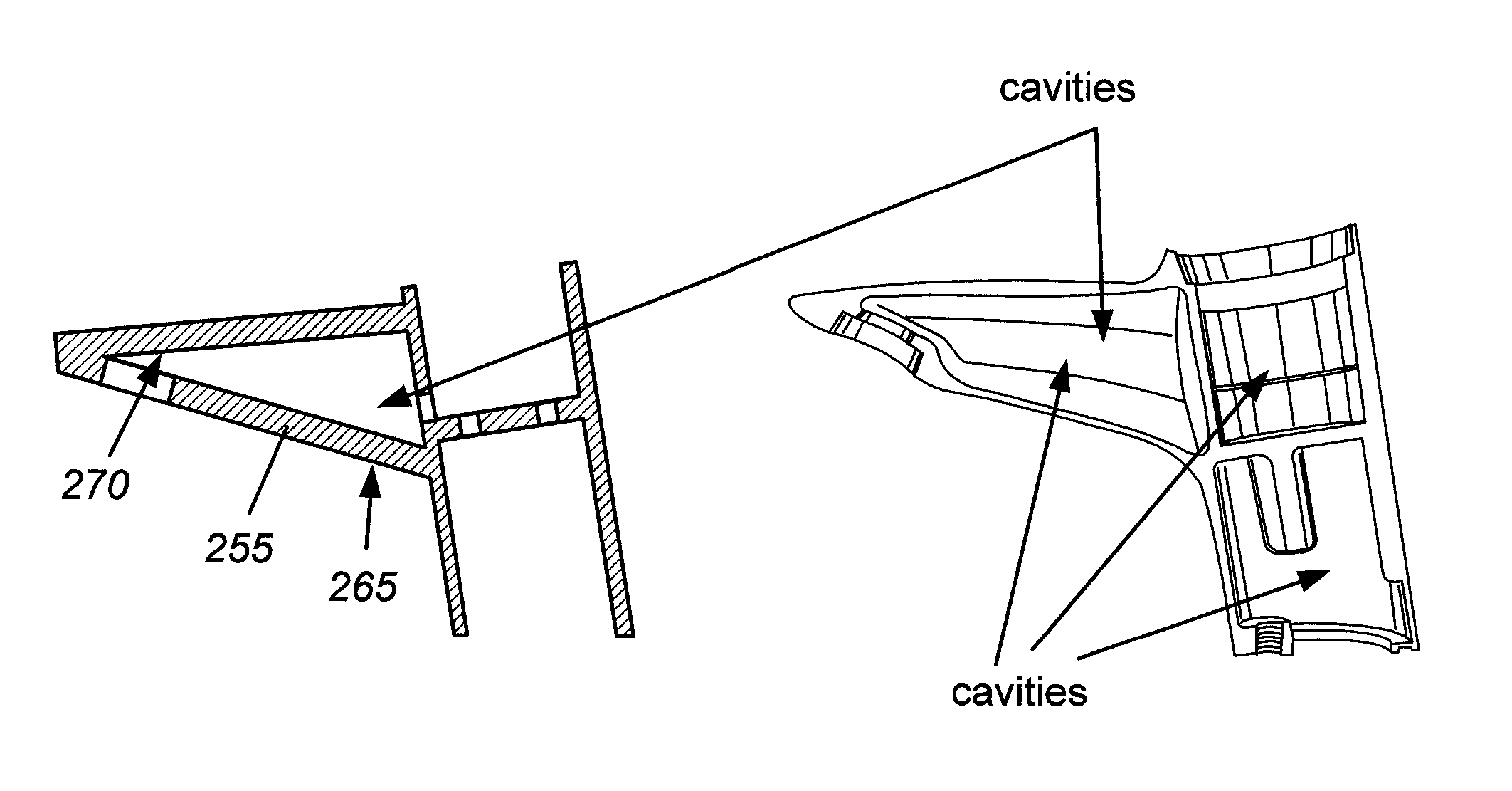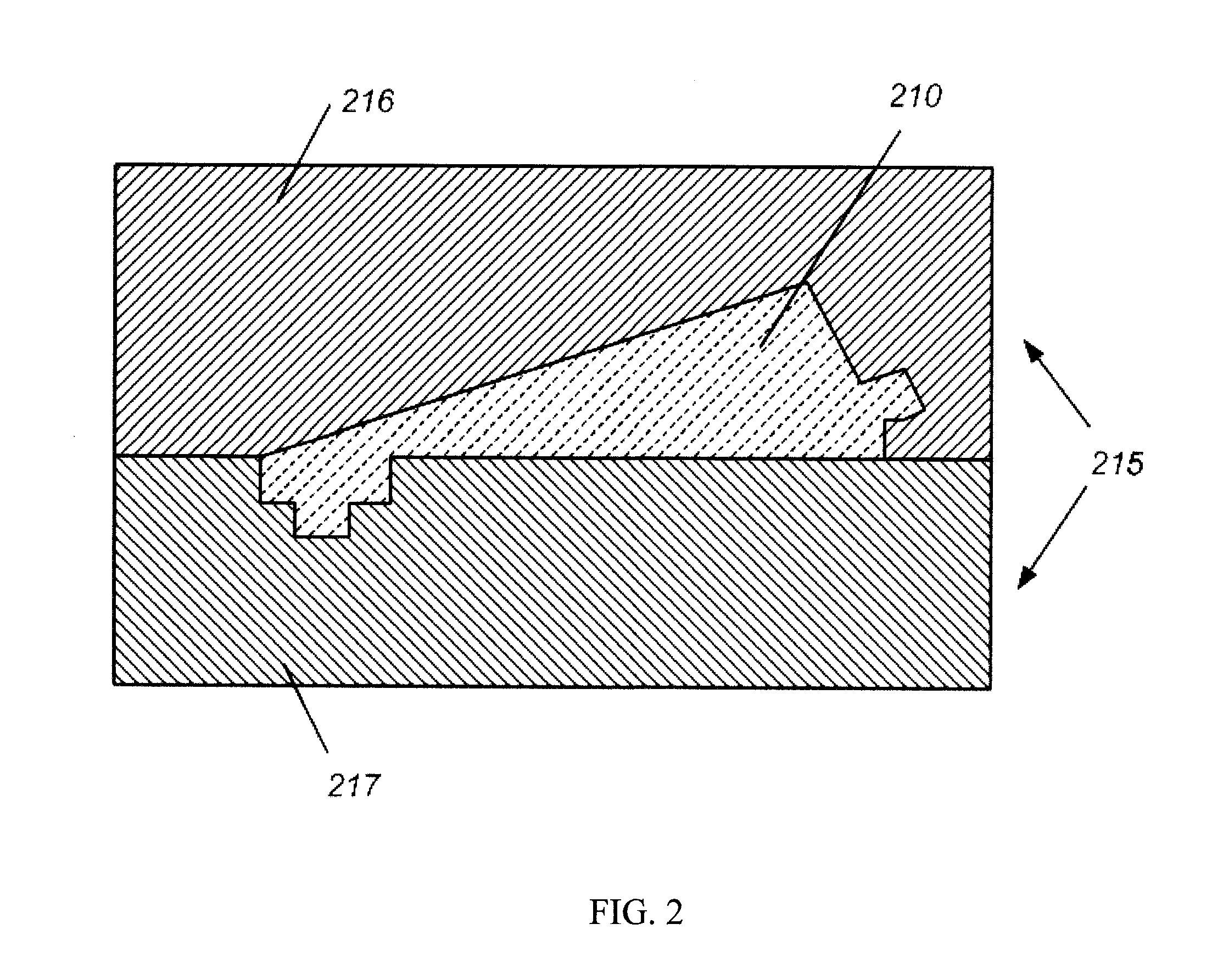Methods for forming faucets and fixtures
a technology for faucets and fixtures, applied in the field of investment casting, can solve the problems of heavy metal elements accumulating beyond the tolerance or load, affecting the health of children, pregnant women and older adults, and affecting the quality of fixtures, so as to save manufacturing costs and eliminate additional welding or machining costs
- Summary
- Abstract
- Description
- Claims
- Application Information
AI Technical Summary
Benefits of technology
Problems solved by technology
Method used
Image
Examples
Embodiment Construction
[0027]Typically, soft metals shapes are formed using sand or die casting (carbon steel molds). Casting stainless steel using sand casting is difficult because at elevated temperatures (greater than 1475° C.) sand molds become unstable. Further, casing stainless steel using steel-on-steel (die) casting is difficult without serious deformation of the tooling components. Investment casting methods of embodiments of the invention advantageously enable the formation of stainless steel fixtures without the problems of prior art casting methods.
[0028]Methods of aspects and embodiments of the invention can be used to form fixtures, such as single-piece faucets having multiple internal chambers. Fixtures formed by methods of embodiments of the invention can be substantially non-toxic and non-verdigris, in compliance with environmental regulations and regulatory limits on toxic chemicals. Methods of preferable embodiments of the invention enable formation of faucets and fixtures that are subs...
PUM
| Property | Measurement | Unit |
|---|---|---|
| temperature | aaaaa | aaaaa |
| temperatures | aaaaa | aaaaa |
| thickness | aaaaa | aaaaa |
Abstract
Description
Claims
Application Information
 Login to View More
Login to View More - R&D
- Intellectual Property
- Life Sciences
- Materials
- Tech Scout
- Unparalleled Data Quality
- Higher Quality Content
- 60% Fewer Hallucinations
Browse by: Latest US Patents, China's latest patents, Technical Efficacy Thesaurus, Application Domain, Technology Topic, Popular Technical Reports.
© 2025 PatSnap. All rights reserved.Legal|Privacy policy|Modern Slavery Act Transparency Statement|Sitemap|About US| Contact US: help@patsnap.com



